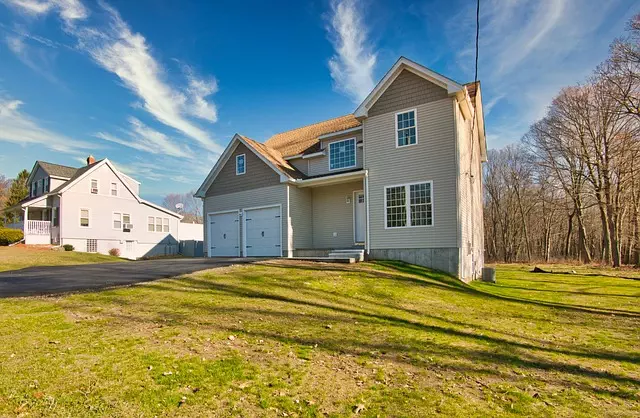Lower Speed Limits for Mopeds: Safety, Environment, & Market Impact
Lower speed limits are reshaping the market for mopeds for sale, influencing buyer preferences towar…….

Lower speed limits are reshaping the market for mopeds for sale, influencing buyer preferences towards electric models or those with advanced safety features designed for slower travel. This trend drives innovation, providing more sustainable transportation options. In urban areas, reduced speeds enhance safety, minimize accident risks, and curb noise pollution. Regulations play a crucial role in setting speed limits, balancing safety and accessibility. Technological advancements in electric mopeds further complicate regulations, prompting discussions about specific guidelines. Lowering speeds benefits the environment by reducing emissions and conserving energy resources. Economic implications affect the mopeds for sale market, influencing consumer behavior and industry trends. Case studies show that lower speed limits effectively enhance safety and improve traffic flow in urban areas.
Lower speed limits on mopeds for sale are gaining traction globally, driven by safety concerns, regulatory changes, and environmental considerations. This article delves into the multifaceted impact of these reduced speeds, exploring their effects on everything from community perspectives and technological advancements to economic implications and environmental benefits. Understanding these factors is crucial for shaping a safer and more sustainable future for mopeds in urban areas, enhancing their role as efficient, eco-friendly transportation options.
Understanding the Impact of Lower Speed Limits on Mopeds for Sale

Lower speed limits can significantly impact the market for mopeds for sale. With reduced maximum speeds, potential buyers may reassess their purchasing decisions, considering safety and practicality. This shift in perspective could encourage a move towards electric mopeds or models with more advanced safety features, as these are typically designed with slower travel in mind.
Dealers and manufacturers of mopeds for sale will need to adapt to these changes. They might introduce new variants that comply with the lower speed limits, ensuring they meet modern regulations while appealing to a broader range of consumers conscious of safety and environmental impact. This evolution in the market could drive innovation and offer more diverse options for buyers looking for sustainable and secure transportation solutions.
Safety Concerns: Why Reduced Speeds Are Essential for Two-Wheelers

In urban areas, where congestion and pedestrian crossings are common, lower speed limits play a pivotal role in ensuring the safety of two-wheelers like mopeds for sale. Higher speeds significantly increase the risk of accidents, especially when sharing roads with vehicles and foot traffic. Reduced speeds provide crucial time for riders to react and brake, minimizing the impact and severity of potential collisions. This is particularly important as moped riders often have less protection than motorists.
Lower speed limits also enhance visibility, allowing riders to be more aware of their surroundings. It encourages a calmer riding experience, improving overall road safety. When considering the growing popularity of mopeds for urban commuting, implementing and enforcing these reduced speeds becomes essential. Such measures not only protect riders but also contribute to a safer, more harmonious sharing of our roads.
The Role of Regulations in Shaping Speed Limits for Mopeds

The role of regulations in setting speed limits for mopeds is paramount, ensuring both safety and accessibility on our roads. These light-weight vehicles, often sought after for their affordability and maneuverability, present unique challenges when it comes to speed regulation. Authorities must consider factors such as average speed among users, local road conditions, and accident statistics to establish appropriate limits. Well-defined regulations not only protect riders but also potential pedestrians and other vehicles on the road.
When exploring mopeds for sale, prospective buyers should be aware of these speed limit guidelines, which can vary by region. Adhering to prescribed speeds not only extends the lifespan of these two-wheelers through reduced wear and tear but also plays a significant role in fostering a safer riding environment. Effective regulations provide a framework that allows for both the enjoyment of moped ownership and the security of sharing public roads with other traffic participants.
Community Perspectives on Lowering Speed Limits for Mopeds

Many communities are reevaluating speed limits, especially in urban areas, to improve safety, reduce noise pollution, and foster a more livable environment. One vehicle type that often sparks debate in these discussions is the moped—a popular mode of transportation for many due to its affordability and maneuverability. Proponents of lower speed limits argue that reducing moped speeds can significantly decrease the severity of accidents and make streets safer for all users, including pedestrians and cyclists. This perspective gains traction given the increasing popularity of mopeds for sale, making them a ubiquitous presence on city streets.
On the other hand, some residents worry that stringent speed restrictions might hinder the convenience and efficiency of moped travel, especially in congested urban settings. They advocate for tailored solutions, such as dedicated lanes or specific traffic signals for mopeds, which could address safety concerns without broadly limiting speeds. This debate highlights a delicate balance between community needs and the desire to create safer, more sustainable urban mobility options, reflecting the ongoing dialogue surrounding moped integration into modern cityscapes.
Technological Advancements and Their Effect on Moped Speed

Technological advancements have significantly influenced the speed capabilities of mopeds, as modern engineering has led to faster and more efficient models. With the rise of electric mopeds, for example, there’s a growing market for mopeds for sale that offer unprecedented performance. These e-mopeds use advanced batteries and motors, enabling them to reach higher speeds while still maintaining maneuverability in urban environments. The digital age has also introduced smart features like GPS tracking, mobile app connectivity, and integrated safety systems, enhancing both the speed and overall user experience.
These technological leaps have challenged traditional speed limits, prompting discussions about regulating these new types of mopeds. As a result, some regions are implementing specific guidelines for electric mopeds, considering their unique performance characteristics. This evolution highlights the need to adapt traffic laws to account for technological advancements, ensuring safety while also allowing for innovative transportation solutions, such as fast and efficient mopeds for sale.
Environmental Benefits of Slower Driving with Mopeds

Slowing down on the roads isn’t just beneficial for safety; it also has a positive environmental impact, especially when considering the growing popularity of mopeds for sale. As moped riders navigate their two-wheeled vehicles at lower speeds, they contribute to reducing emissions and minimizing air pollution. This is because mopeds, being more fuel-efficient than many cars, release fewer greenhouse gases per mile traveled. Lower speed limits encourage a smoother, more controlled ride, which can significantly decrease the wear and tear on vehicle components, leading to reduced fuel consumption and lower maintenance costs for owners.
Moreover, the environmental advantages extend beyond emissions. Slower driving patterns can help conserve energy resources as they demand less from the engine. This, in turn, leads to a smaller carbon footprint for individual commuters, making moped riding an eco-friendly choice among those seeking efficient transportation options. With many people now looking to reduce their carbon emissions, the simple act of adopting slower speeds can be a powerful contribution to preserving our planet’s resources.
Economic Implications: How Reduced Speeds Affect the Moped Market

The introduction of lower speed limits can have significant economic implications, particularly in the two-wheeler market, including the segment of mopeds for sale. While safety is often the primary driver behind such changes, it also influences consumer behavior and industry trends. When speeds are reduced, drivers tend to spend more time on their commutes, which may lead to a perceived increase in operating costs for mopeds. This could discourage some potential buyers who opt for faster vehicles due to time savings.
The impact extends further as manufacturers might need to adapt their strategies. They could focus on designing mopeds with enhanced fuel efficiency and performance within the new speed parameters to remain competitive in the market. Consequently, consumers may have access to more energy-efficient moped models, leading to environmental benefits and potentially attracting a new segment of buyers who prioritize sustainability when considering mopeds for sale.
Case Studies: Successful Implementation of Lower Speed Limits in Urban Areas

In many urban areas, lower speed limits have been successfully implemented to enhance safety and improve overall traffic flow. One notable case study involves a European city that reduced its default speed limit from 50 km/h (31 mph) to 30 km/h (18 mph). This change was accompanied by an extensive public awareness campaign and the introduction of physical road markings and signage. The results were encouraging, with a significant reduction in both traffic accidents and fatalities, particularly among vulnerable road users like pedestrians and cyclists. Mopeds for sale in these areas often become more prominent as lower speed limits encourage drivers to opt for slower, eco-friendly modes of transport.
Another successful example is a North American city that experimented with dynamic speed limits using real-time data from traffic sensors. During peak hours, the system adjusted speed limits accordingly, allowing for smoother traffic flow without compromising safety. This approach not only reduced congestion but also lowered emissions and fuel consumption. The positive outcomes led to the permanent adoption of dynamic pricing on certain roads, further incentivizing drivers to adhere to lower speed limits, especially during busy periods. These case studies demonstrate that implementing lower speed limits can lead to safer streets and more sustainable urban mobility options, including mopeds for sale within these cities.
Future Trends and Considerations for Moped Speed Limits

As we move forward, the intersection of mobility and safety demands innovative approaches. Future trends in urban planning may see even stricter speed limits for mopeds, especially in densely populated areas where foot traffic is high. This could involve smart city technologies that dynamically adjust speed restrictions based on real-time data about pedestrian and vehicle movements. The goal would be to create safer, more livable spaces by minimizing risks associated with higher speeds.
When considering the market for mopeds for sale, it’s crucial to anticipate these changes. Manufacturers and dealers alike will need to adapt their offerings to meet new regulatory standards. Electric mopeds, for instance, might gain prominence due to their potential for quieter operation and easier control at lower speeds. This shift could also encourage more responsible riding behaviors among users, fostering a culture of safety that extends beyond legal requirements.







